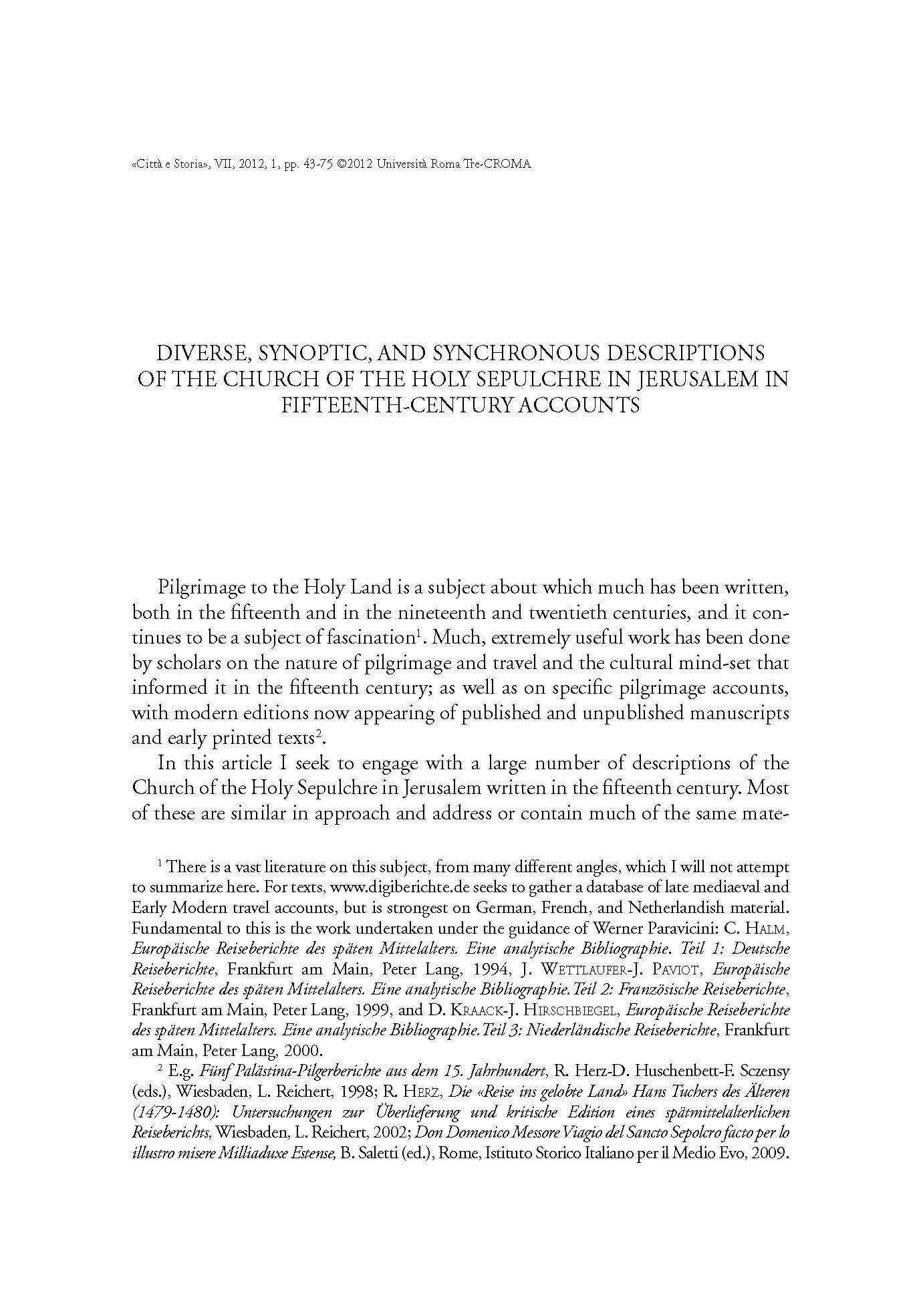Diverse, Synoptic, and Synchronos Description of the Church of the Holy Sepulchre in Jerusalem in Fifteenth-Century Accounts
6,00 €
This article examines fifteenth-century pilgrims’ written descriptions of the Holy Sepulchre in Jerusalem. Examining a large number of accounts produced over the course of the century by writers from a range of Western European countries, the article considers what those writers chose to include in their descriptions of the Church of the Holy Sepulchre, and more particularly of the Holy Sepulchre itself. It thus looks at the different kinds of ways in which these writers sought to represent and describe what was widely seen as the most important relic of Christianity – the Holy Sepulchre. The aim of the article is not to identify original textual sources of descriptions, nor to define a generic ‘pilgrim’s experience’ or the experience of a particular pilgrim or set of pilgrims, but rather to explore what these many authors thought it important, necessary, or interesting to record for themselves or posterity.
This article examines fifteenth-century pilgrims’ written descriptions of the Holy Sepulchre in Jerusalem. Examining a large number of accounts produced over the course of the century by writers from a range of Western European countries, the article considers what those writers chose to include in their descriptions of the Church of the Holy Sepulchre, and more particularly of the Holy Sepulchre itself. It thus looks at the different kinds of ways in which these writers sought to represent and describe what was widely seen as the most important relic of Christianity – the Holy Sepulchre. The aim of the article is not to identify original textual sources of descriptions, nor to define a generic ‘pilgrim’s experience’ or the experience of a particular pilgrim or set of pilgrims, but rather to explore what these many authors thought it important, necessary, or interesting to record for themselves or posterity.

